Affiliate links on Android Authority may earn us a commission. Learn more.
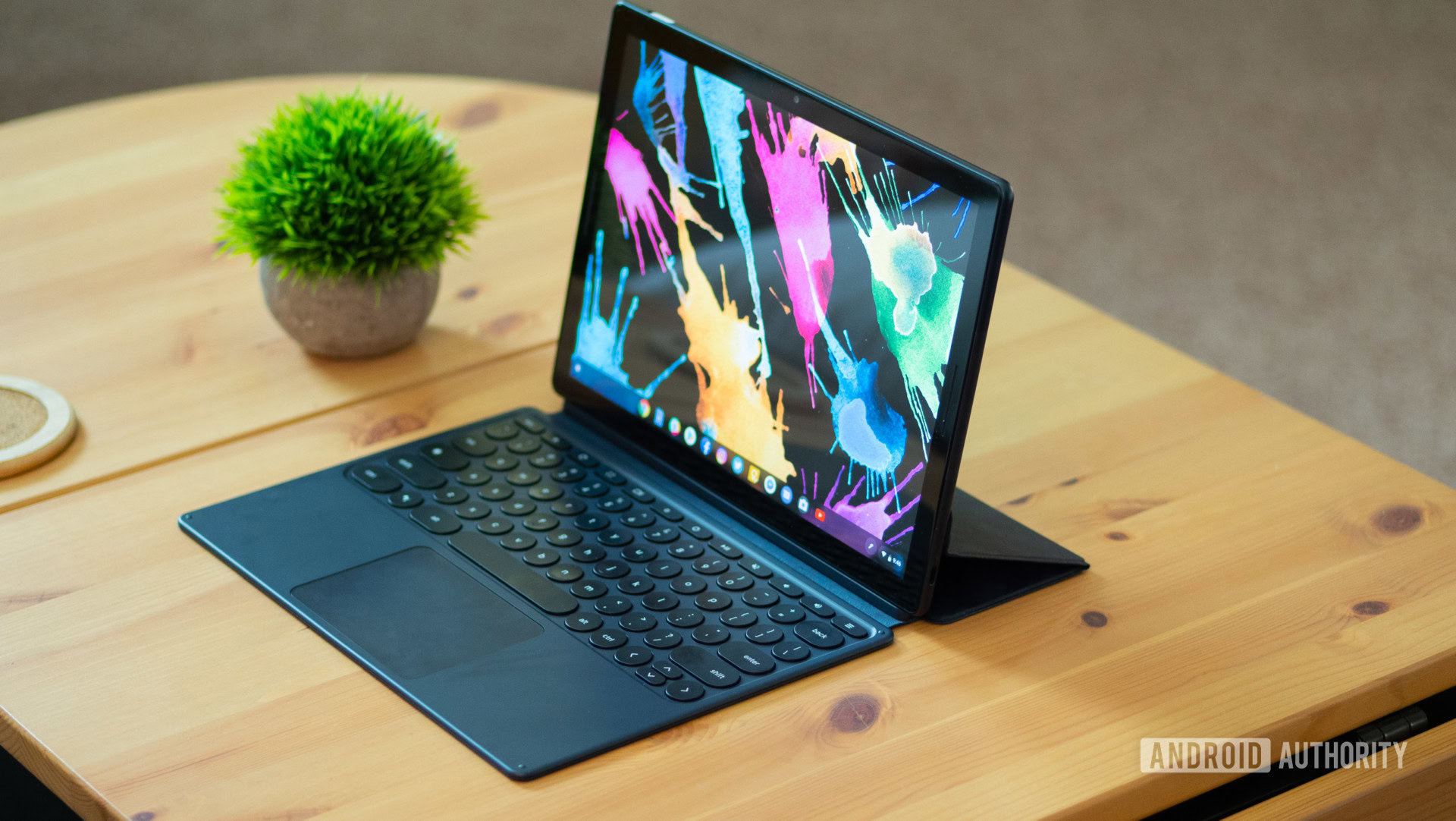
Google Pixel Slate review: Overpriced convenience (Update: On sale)
Published onJanuary 10, 2020
Google Pixel Slate
What we like
What we don't like
Google Pixel Slate
Update: January 22, 2020: You can currently get the Core m3 version of the Pixel Slate with 8GB of RAM for just $445.
The Pixel Slate is Google’s latest entry into the booming category of tablet-laptop hybrids. With Chrome OS, a detachable keyboard, a stylus, and support for Android apps, it’s trying to be a machine for all of your productivity and multimedia needs.
Is the Pixel Slate powerful enough to be your primary computer. With a price tag that adds up quickly would you even want it to be? Find out in our full Google Pixel Slate review.
Design
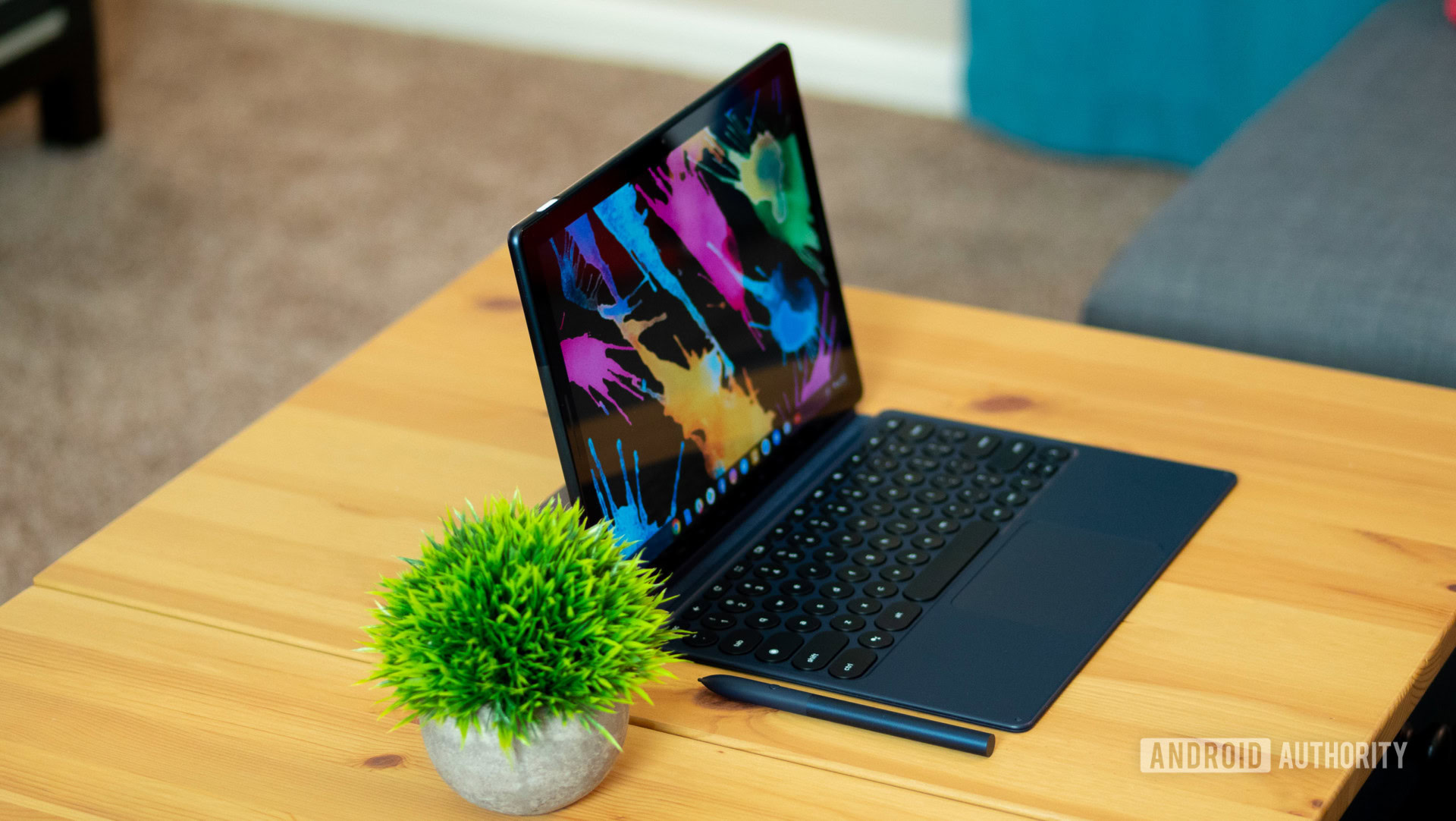
As with other Google hardware, Google’s keeps a simple approach to the Pixel Slate’s design. The body of the Pixel Slate is made of anodized aluminum, coated in a stealthy midnight blue. No other color options are available, so if you want something a little more colorful you’re simply out of luck at the moment.
Further reading: Google Pixel 3 and Pixel 3 XL review
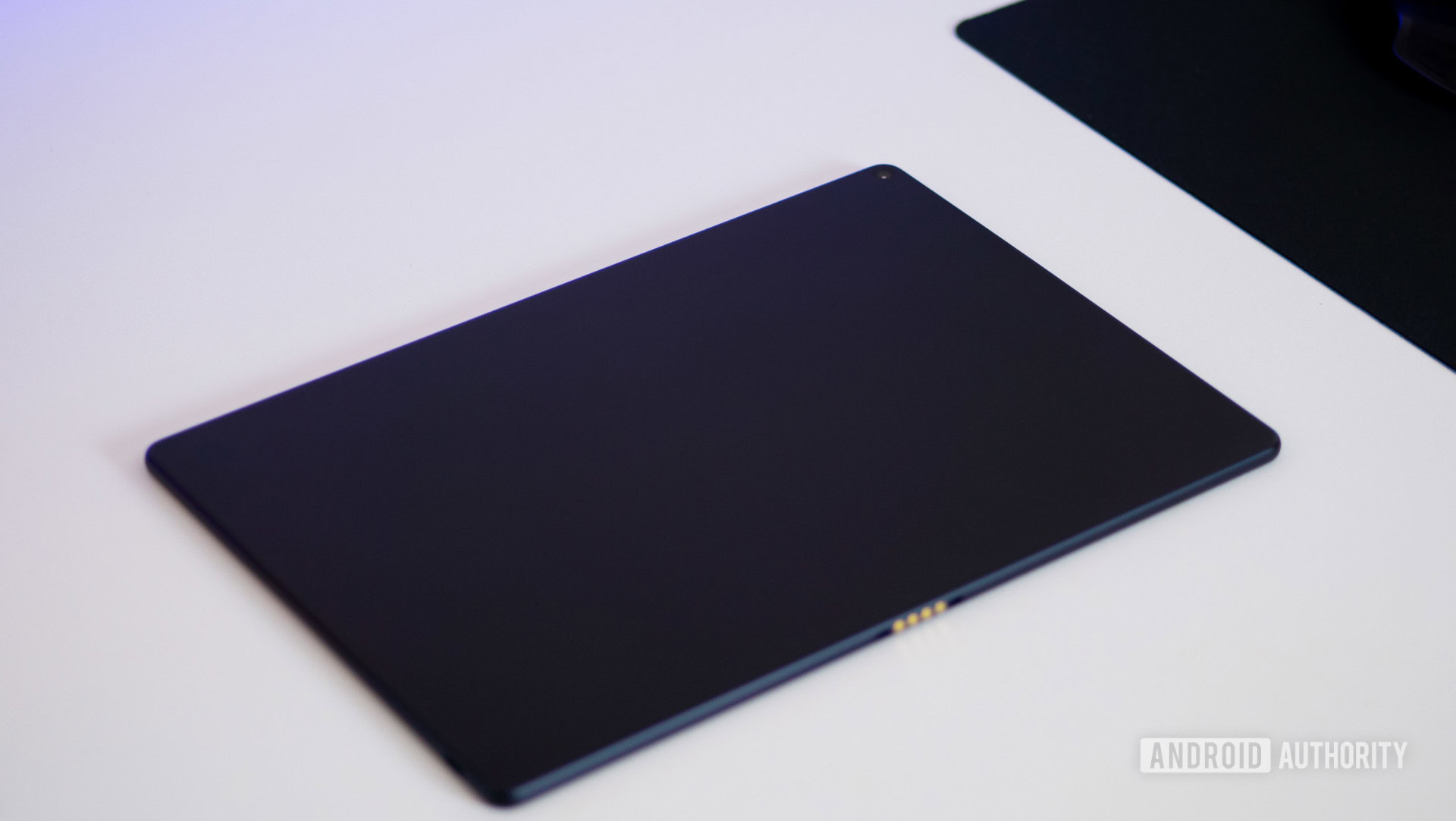
The metal build of the Pixel Slate is sturdy and with a weight of 1.6 lbs, it doesn't feel too heavy or too light.
The Pixel Slate has a very clean appearance with nothing on the back except for Google’s G logo in the upper left corner and the rear-facing camera in the upper right. The metal build of the Pixel Slate is sturdy, and, weighing 1.6lbs, it doesn’t feel too heavy or too light. At only 7mm thick, the tablet is sleek, with rounded corners, curved sides, and curved edge glass that make it very comfortable to hold.
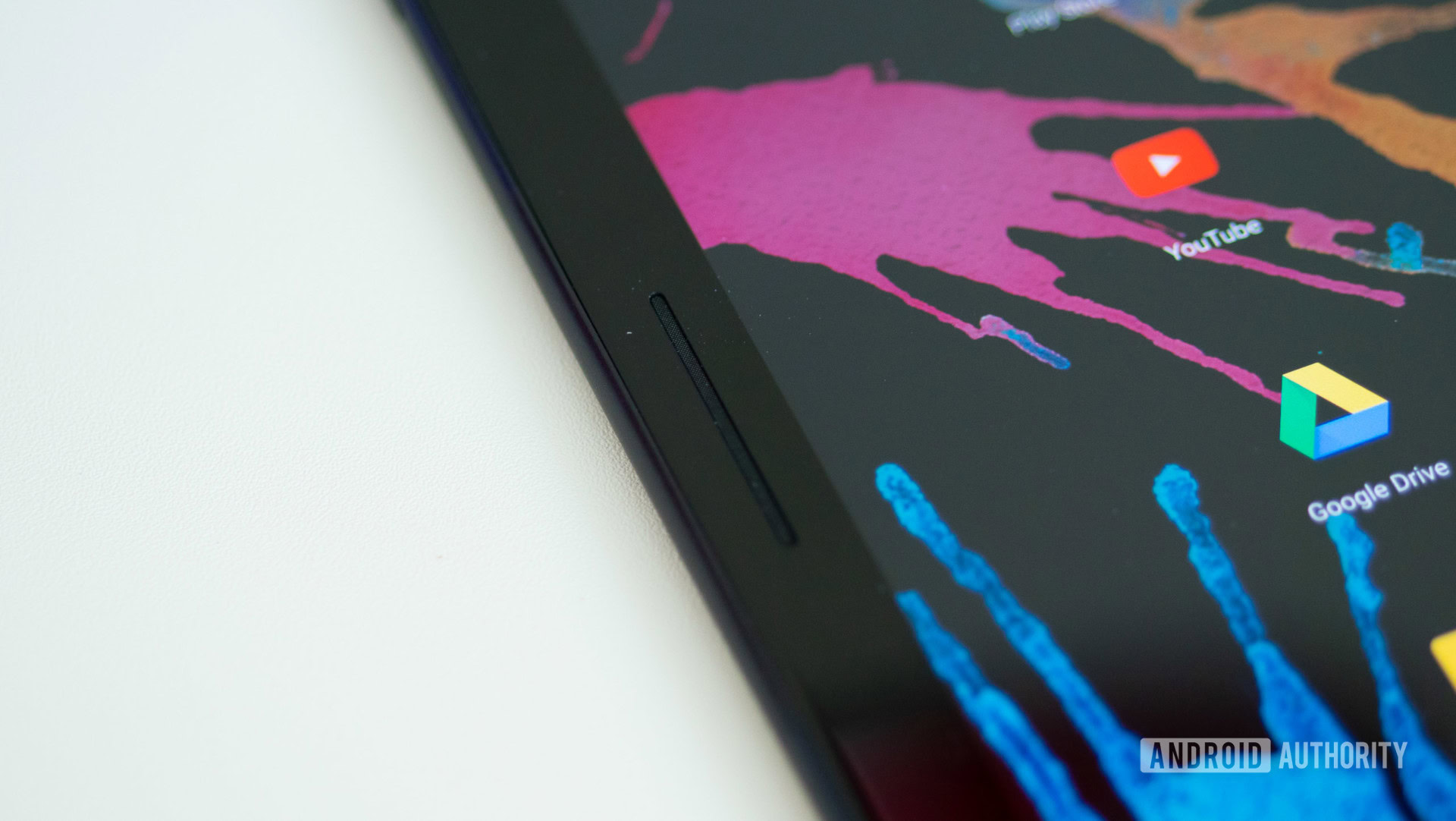
The bezels on the front are thick but not unnecessarily so. They’re just wide enough to give you a resting area to comfortably place your thumbs and they also make way for an incredible sounding pair of front-facing speakers. The speakers are loud, crisp, and clear, showing no signs of distortion at high volumes. Listening to music and watching YouTube or Netflix is much more immersive due to the stereo sound and speakers being directed right towards your ears.
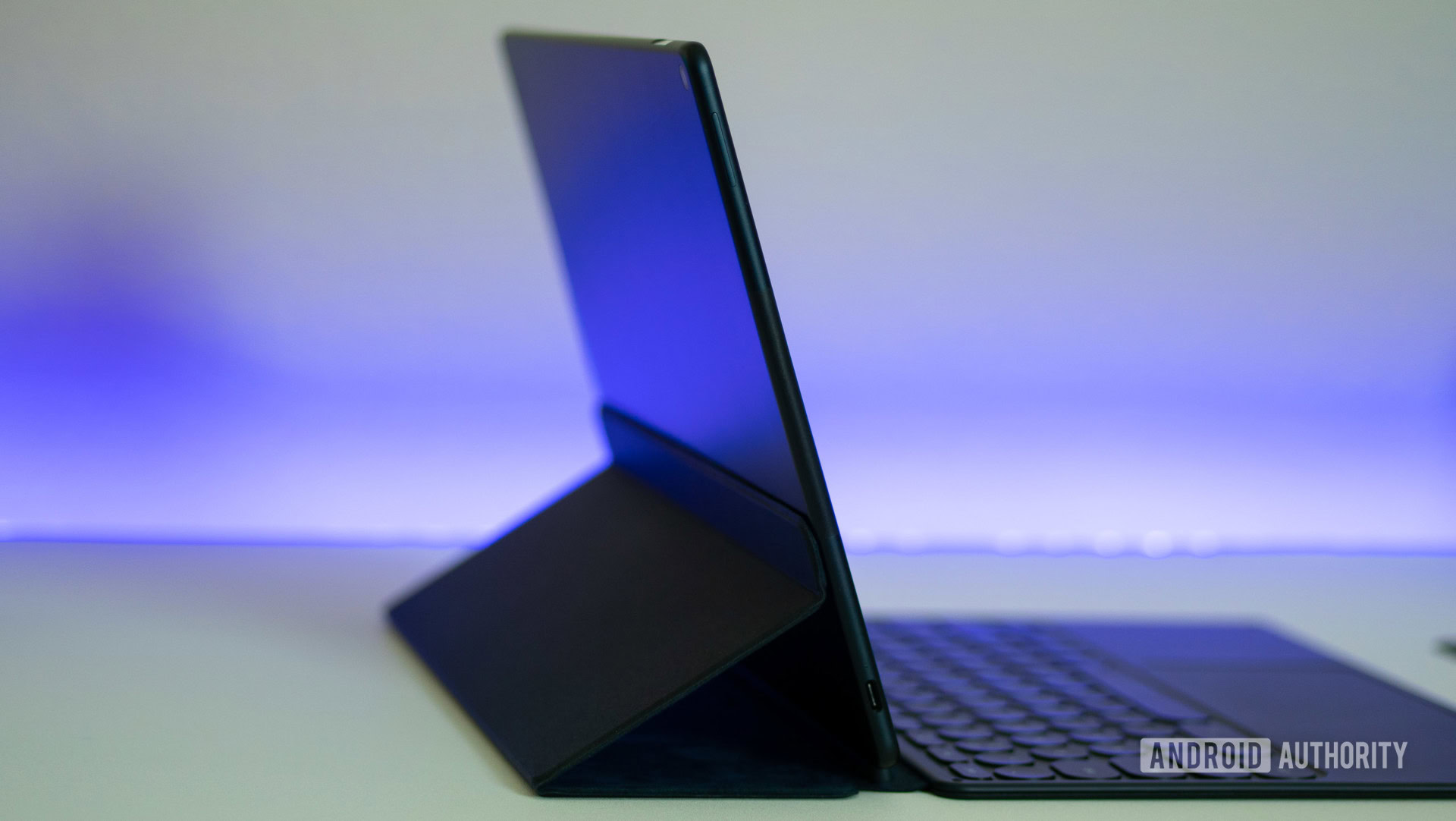
Port selection on the Pixel Slate is pretty barebones. There are two USB Type-C connections on the left and right sides or top and bottom if you’re holding the device in portrait orientation. The USB Type-C ports are used to charge the Pixel Slate, but they can also transfer data and output to a 4K display. You’ll also be using the USB Type-C ports for plugging in headphones as there is no headphone jack. Thankfully with there being two them, you can still charge the device and have headphones plugged in at the same time.
Read more: Why the Pixel Slate means the headphone jack is gone for good
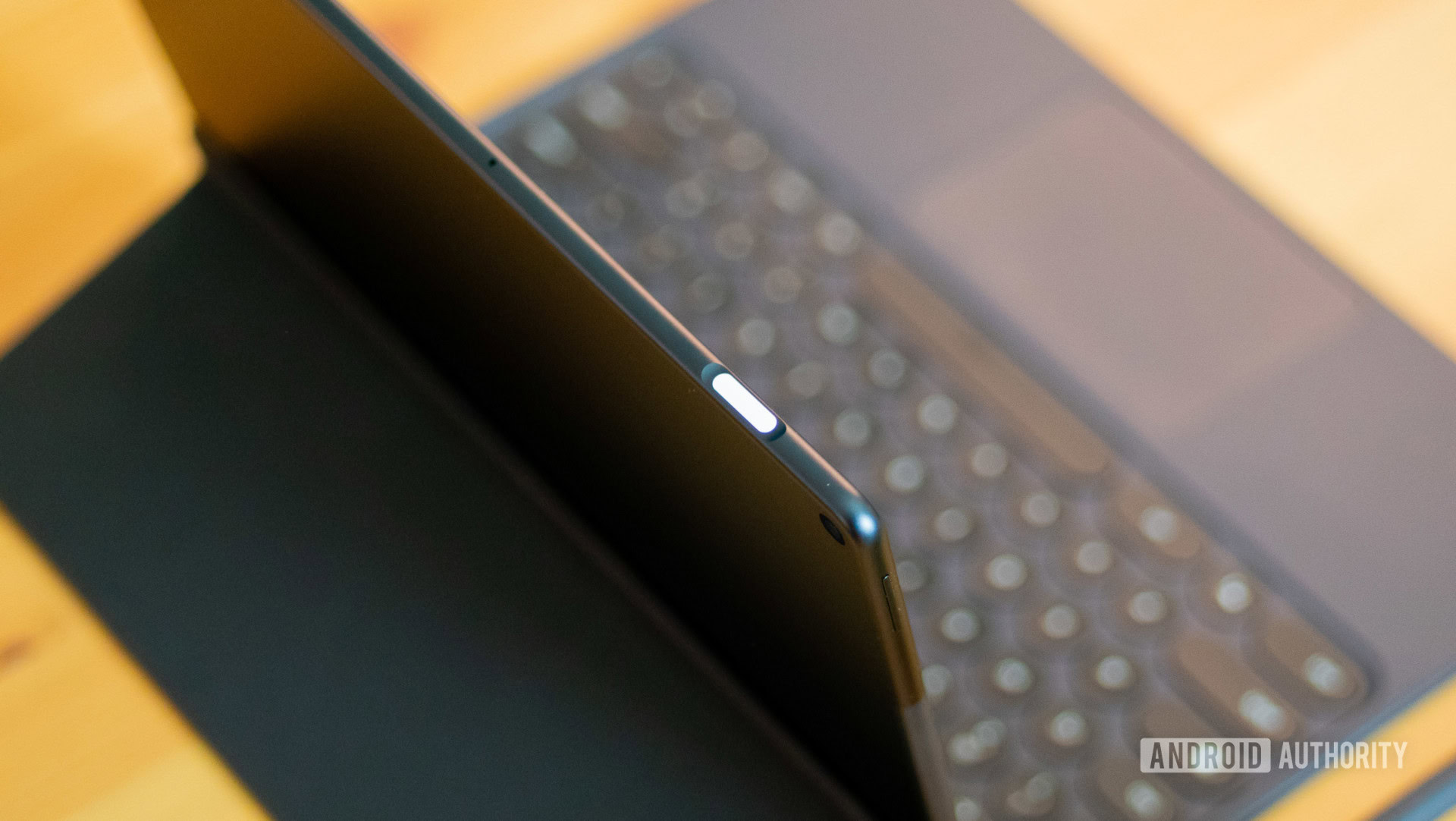
In landscape orientation, there are dual microphones for improved noise cancellation and the power button on top of the Pixel Slate. Instead of being color matched to the rest of the tablet, the power button is coated in a white finish. It also doubles as a fingerprint sensor, which is why it has a flat and wide pill shape. On the opposing or bottom edge of the Pixel Slate are copper connectors. The copper connection points are for connecting to the Pixel Slate Keyboard, which we’ll get into later.
Display
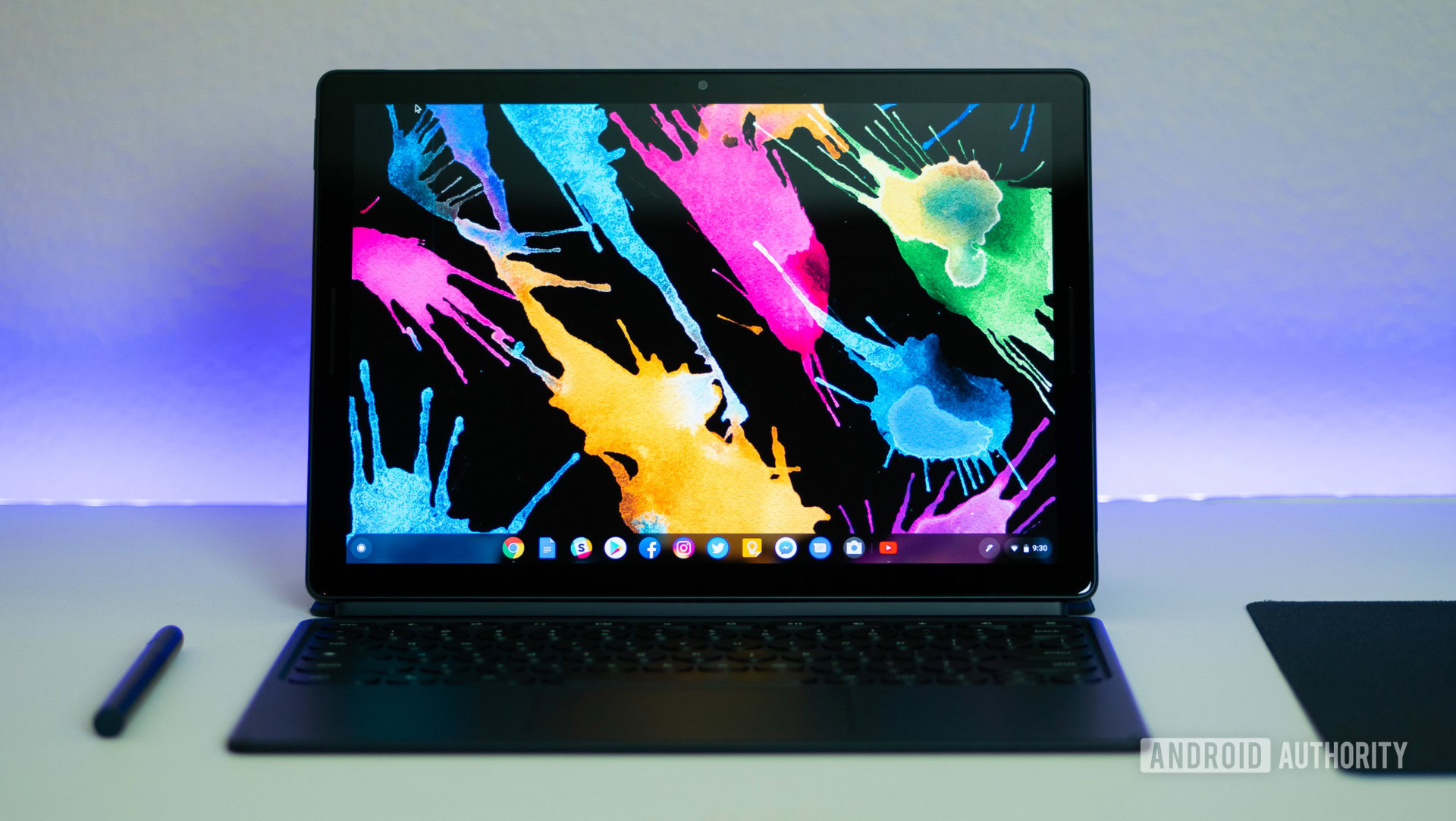
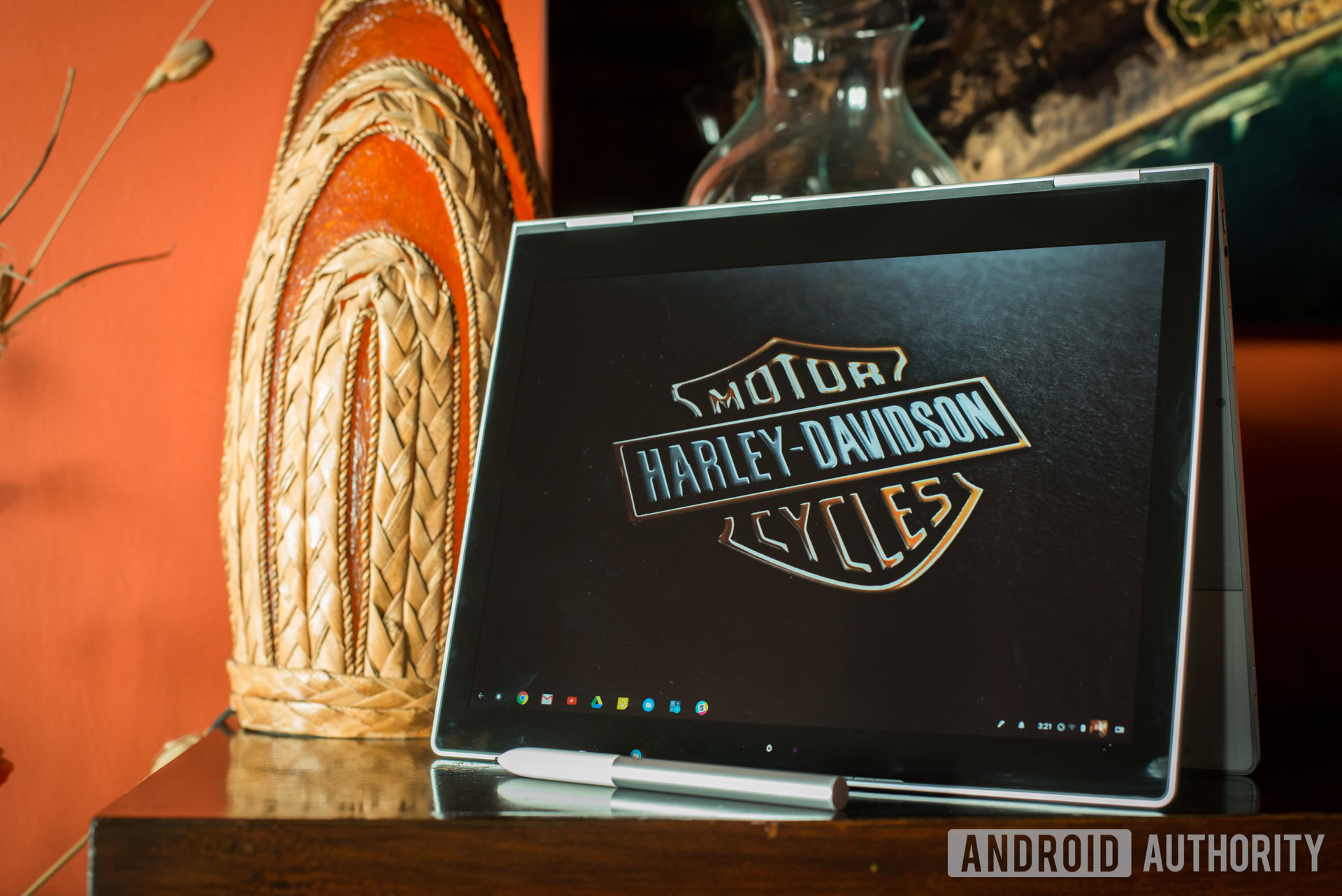
The Pixel Slate has the same 12.3-inch screen size and 3:2 aspect ratio as Google’s previous tablet-laptop hybrid, the Pixelbook, but it’s much higher resolution. The Pixel Slate’s LCD display is incredibly sharp, with a 3,000 x 2,000 resolution. Google calls the screen a “Molecular Display” which feels like nothing more than a marketing buzzword to compete with Apple’s Retina.
The black levels on this panel are so good that you might second guess it for an AMOLED panel.
Marketing buzzwords aside, the screen is phenomenal. The 12.3-inch screen size is large and comfortable to use as a tablet and a laptop. Watching movies, playing games, or just simply browsing the web on the Slate’s colorful, vibrant, and contrasty display is a joy. The black levels on this panel are so good you might second guess it for an AMOLED panel. The screen gets bright enough to comfortably read should you decide to take your productivity or entertainment outside for the day, too.
Performance
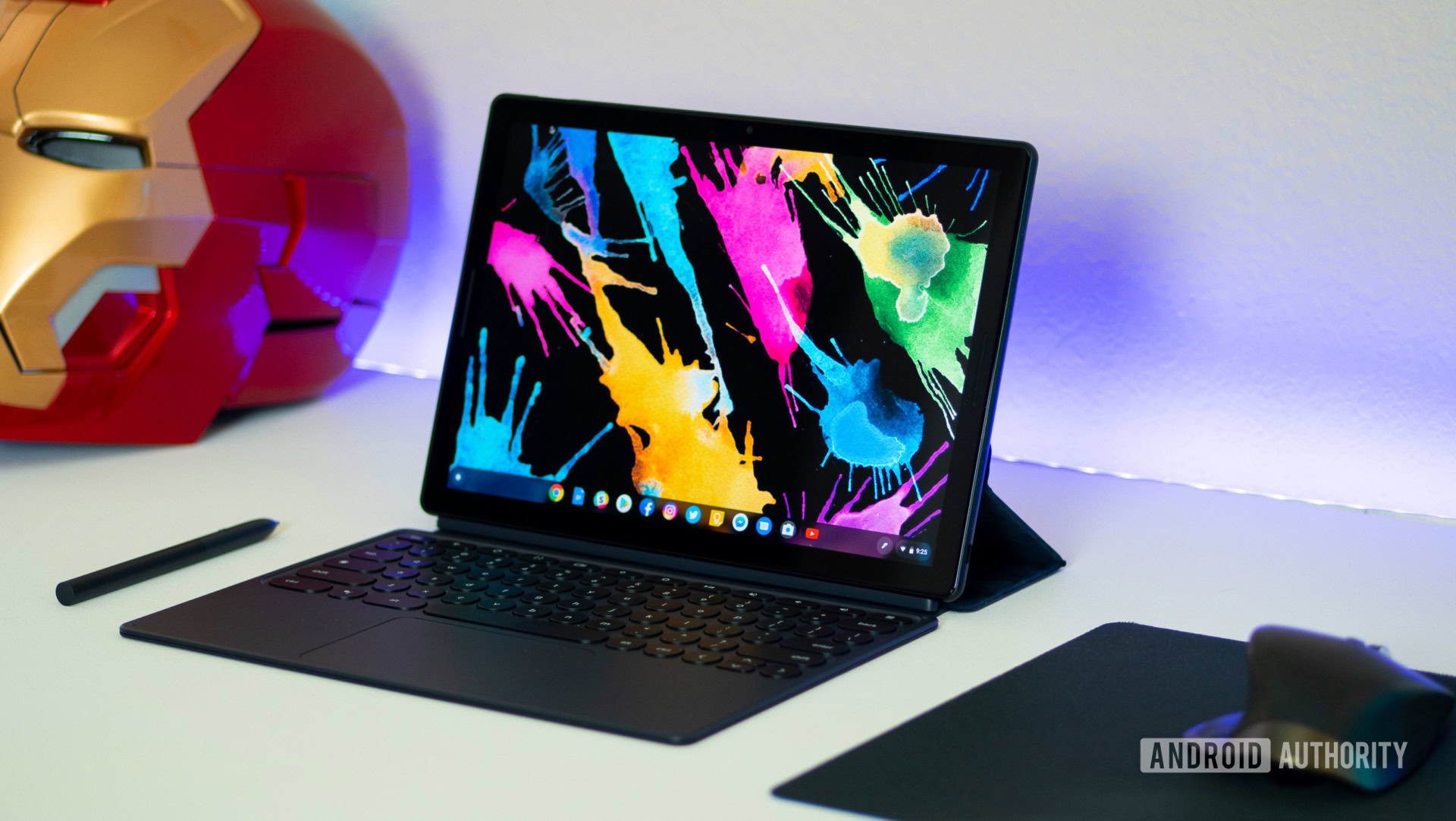
The Pixel Slate doesn't offer expandable storage regardless of configuration.
Performance on the Pixel Slate will vary based on the model. The Pixel Slate comes in five configurations, varying in RAM, storage, which Intel chip is used. The model I’ve been testing is powered by an Intel Core i5 y-series processor, 8GB of RAM, and a 128GB SSD. This is the second highest tier model. The Pixel Slate doesn’t offer expandable storage regardless of configuration.
While I can’t speak for the lower end models, performance on the i5 variant has been great. The Pixel Slate simply flies through Chrome OS. I can have a bunch of Chrome tabs open and jump back and forth between multiple Android apps without the Pixel Slate showing any signs of slowing down. The Pixel Slate is also a perfectly capable machine for gaming purposes. Graphically demanding titles like Shadowgun Legends from the Google Play Store runs on high graphics settings and with consistently smooth gameplay.
Also read: The best Chromebooks you can buy
The highest end model with a Core i7 will undoubtedly offer even better performance but I’ve had no complaints with the i5 version. It’s plenty powerful enough for me to confidently use it as my daily workstation and entertainment device.
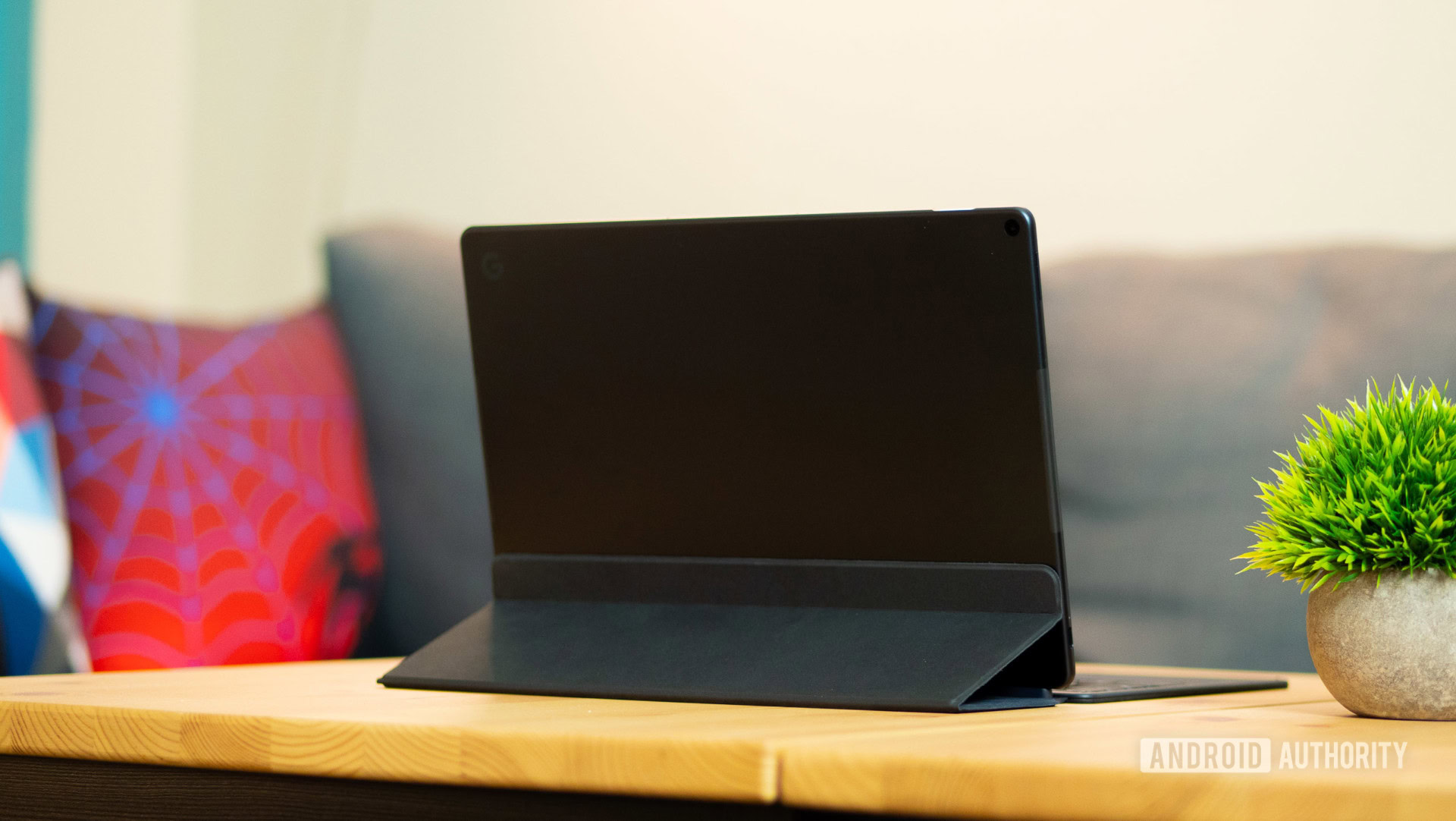
According to Google, the Pixel Slate can get up to 12 hours of battery life on it’s 48WHr battery. Obviously, your mileage may vary but I’m getting closer to nine or 10 hours on a single charge. Admittedly, I do use the Pixel Slate very heavily. On top of emails, social media, and browsing the web I’ve been using the Pixel Slate as my primary computer for work and play. This entire review article you’re reading was written on the Pixel Slate and I’ve also spent many hours on this device watching YouTube, Twitch, and playing games.
Pixel Slate Keyboard
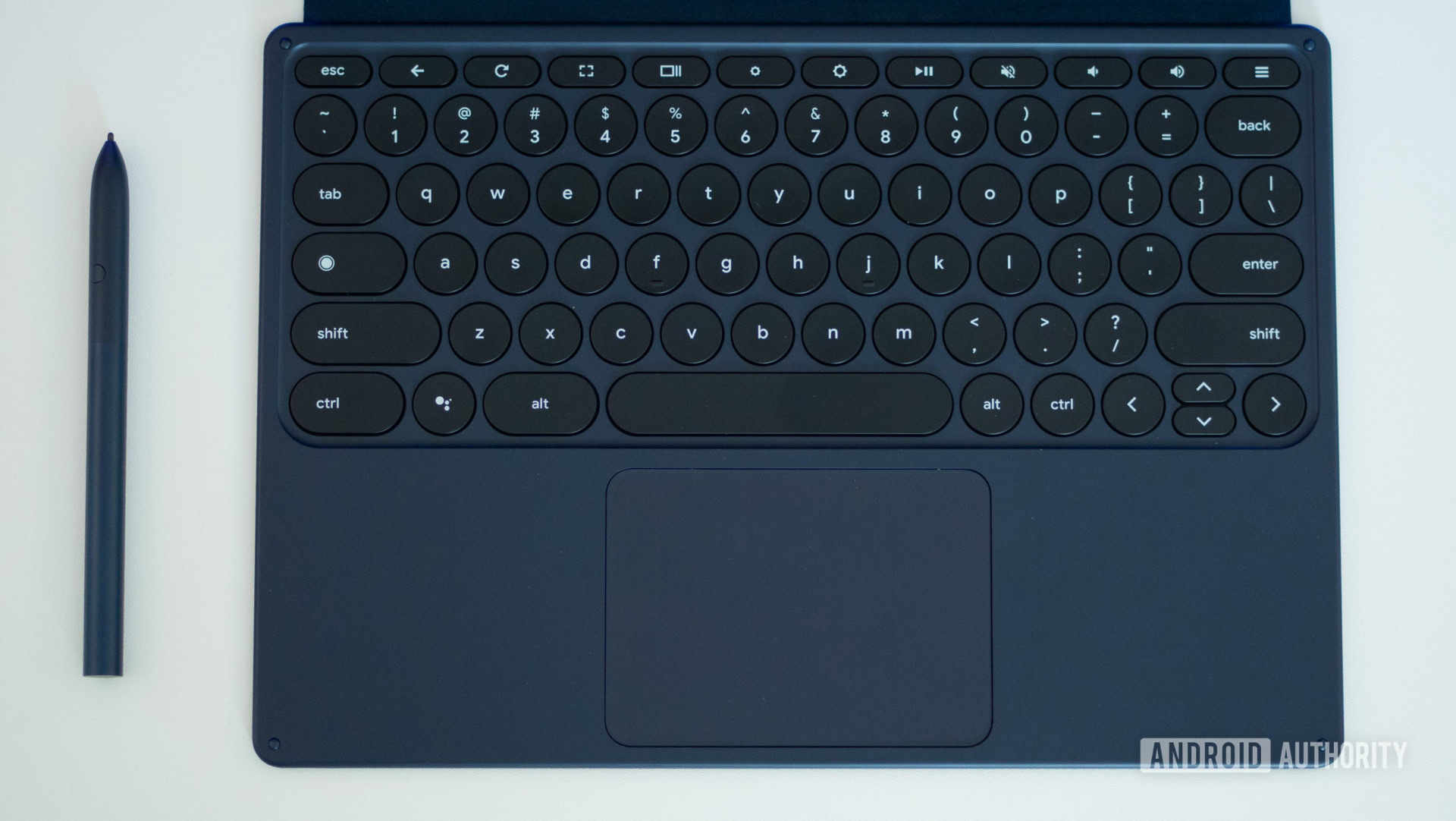
At $199, the Pixel Slate Keyboard is not cheap but it's a very well thought out piece of hardware...
To get the most out of the Pixel Slate for productivity purposes, purchasing the additional keyboard is a must. At $199, the Pixel Slate Keyboard is not cheap but it’s a very well thought out piece of hardware that serves as more than just a detachable keyboard. The Pixel Slate Keyboard is also a protective case for carrying your Pixel Slate around. The exterior has a soft-touch grippy texture that’s easy to hold onto and doesn’t attract any fingerprints.
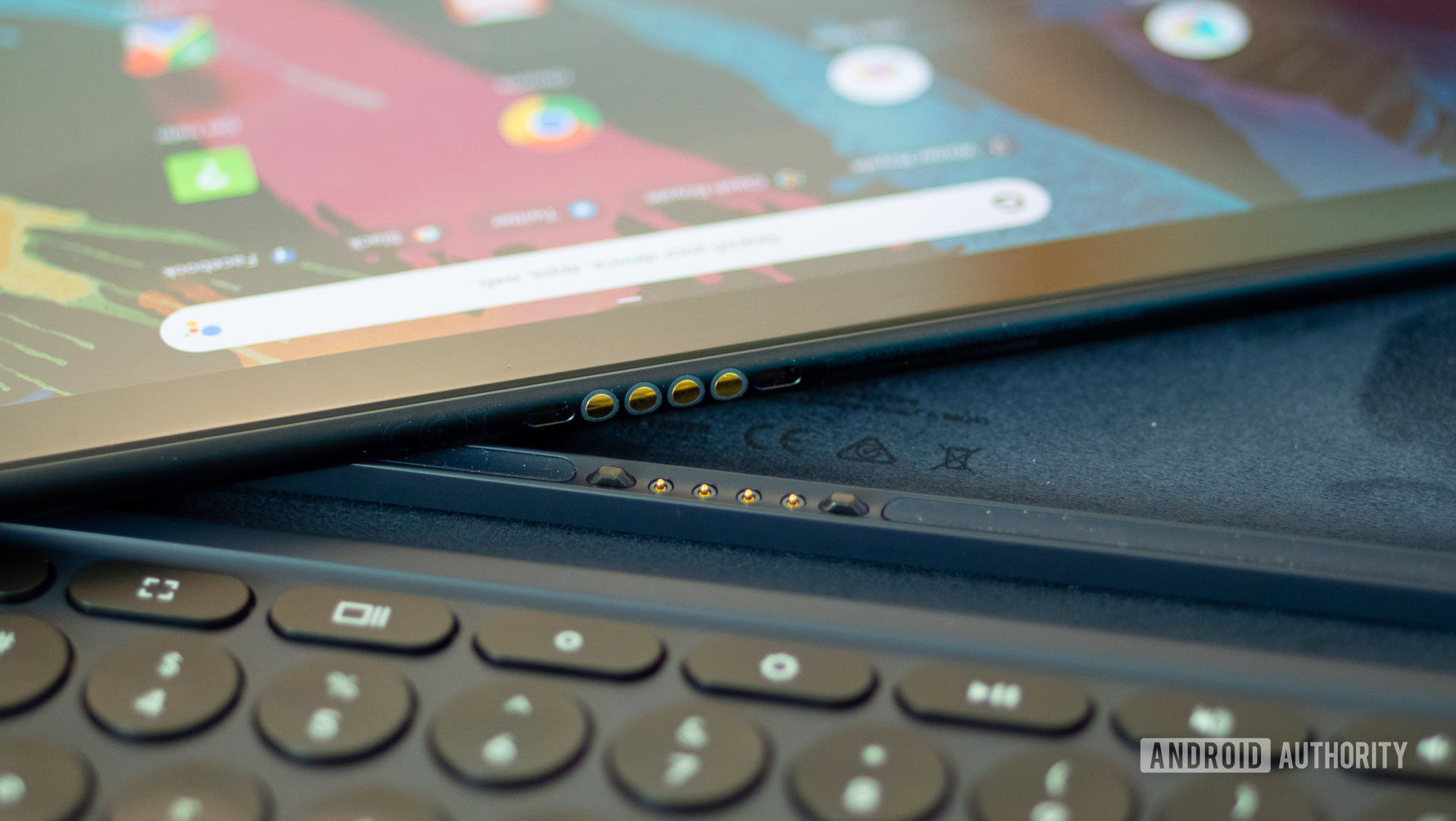
The keyboard draws its power from the tablet, so you don’t have to worry about charging it. The tablet and keyboard connect via the copper connection points and magnets sturdily hold them in place. It’s easy to connect them, and once they’re attached, you can immediately start typing. No Bluetooth pairing or any other fuss is required.

The back panel is foldable and works as a prop for holding the screen upright when you want to use the Slate as a laptop. It’s adjustable giving you a wide range of angles to suit your needs. The keyboard can also flip upside down to act as a base when you want it out of the way. This mode is particularly useful for media consumption. Putting the keyboard in this position also disables it to prevent any accidental presses.
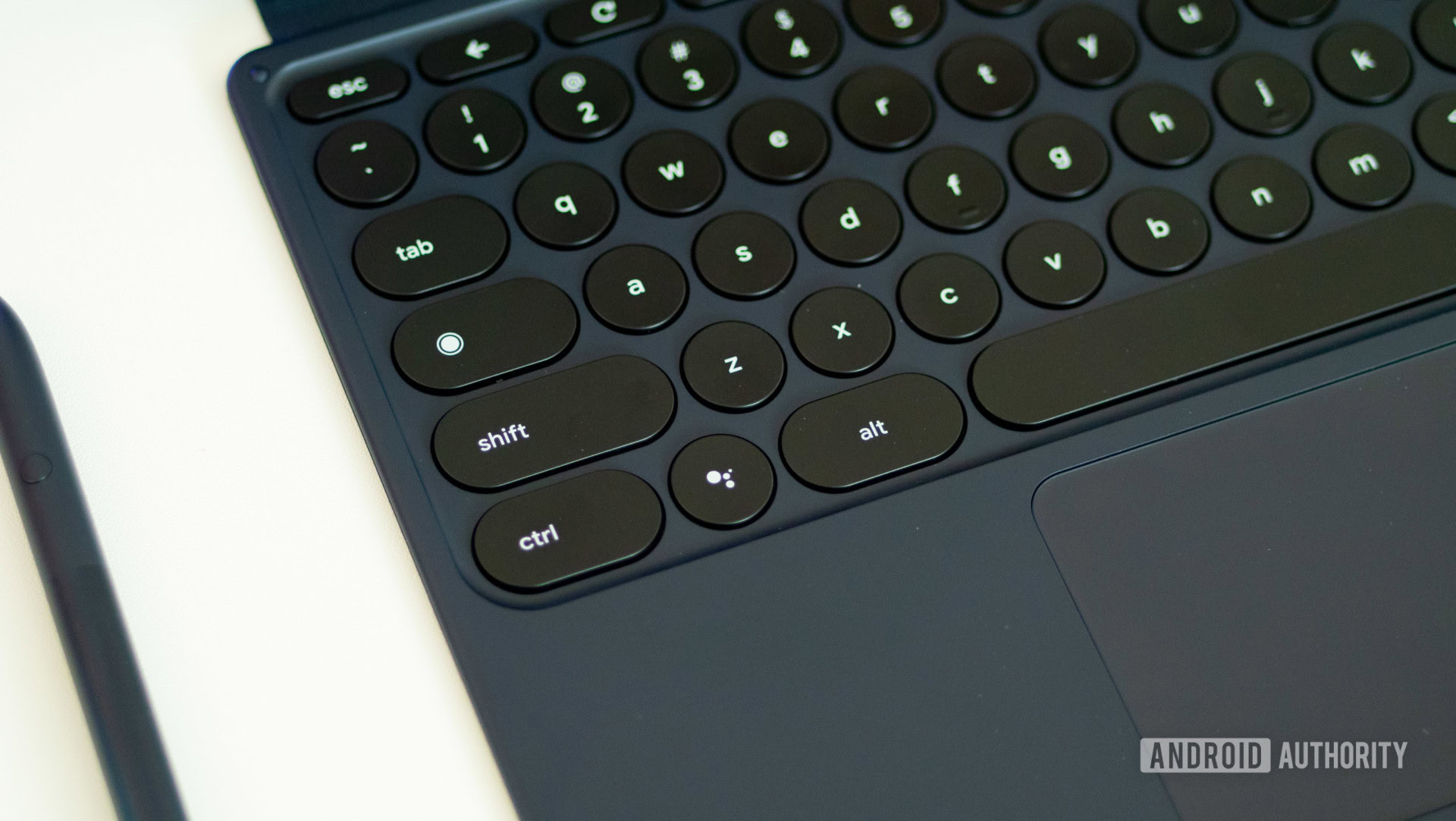
One of the more unique features of this keyboard is the shape of the keys. Instead of traditional square keys, the Pixel Slate Keyboard uses circles. They might visually throw you off at first but getting acclimated it takes virtually no time to get acclimated to them. The circular shape create more separation between the keys making them easier to distinguish by feel. Given the limited amount of space, the Pixel Slate Keyboard offers a full-sized keyboard with a dedicated number row. There are also many other useful buttons including a Google Assistant button, buttons for controlling screen brightness, volume controls, and a multitasking button.
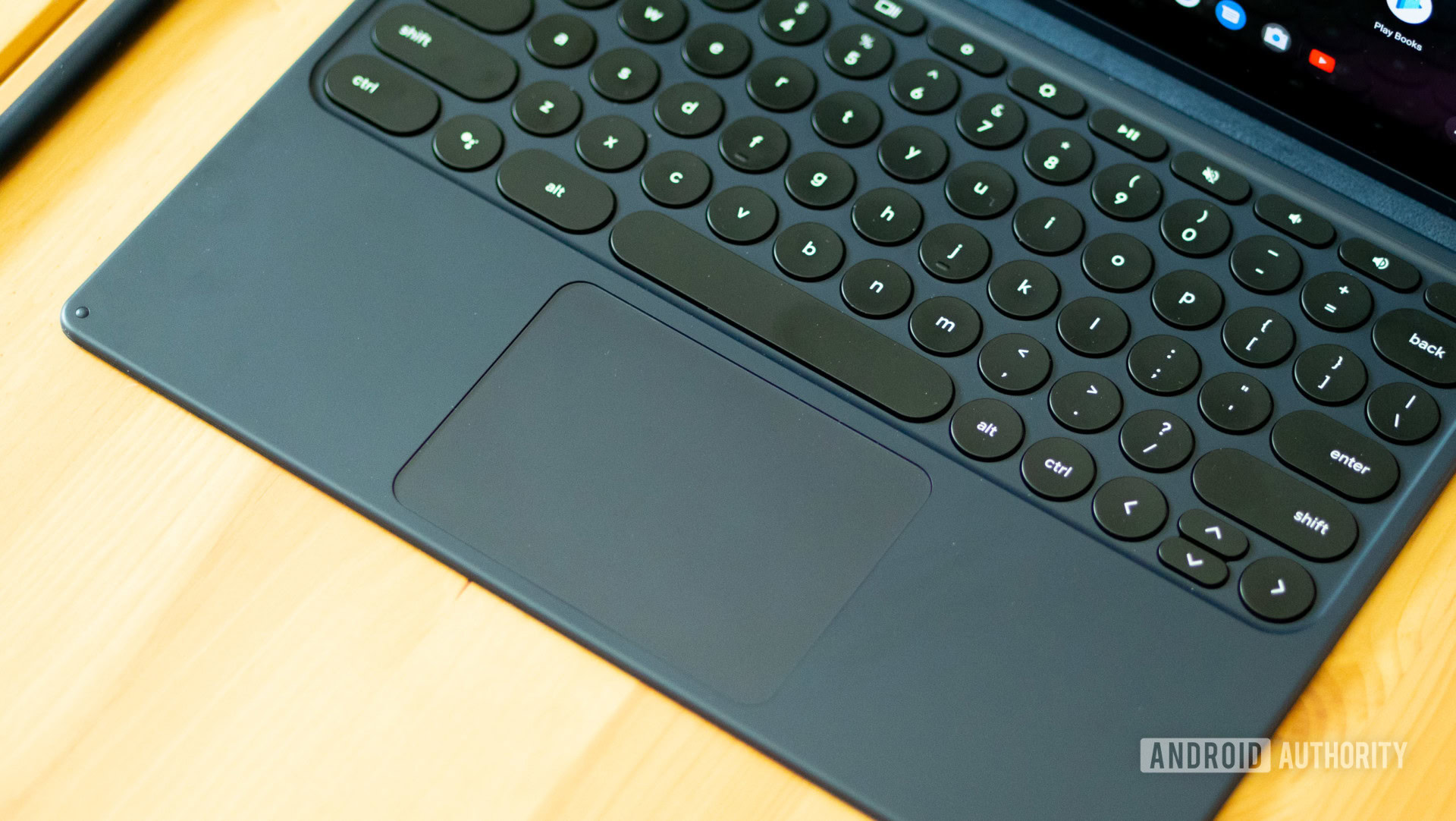
Typing on the keyboard is an enjoyable experience. The keys offer a satisfying amount of travel and feedback and remain very quiet when typing. Google calls them “Hush Keys” and they certainly live up to the name. The keys are also backlit in a soft bright white for easier typing in low light. The trackpad is equally good. It’s made of etched glass, there’s plenty of room for movement, and the clicks are satisfying. It supports multi-touch gestures for pinching and zooming or performing right-click actions by pressing down with two fingers.
Pixelbook Pen
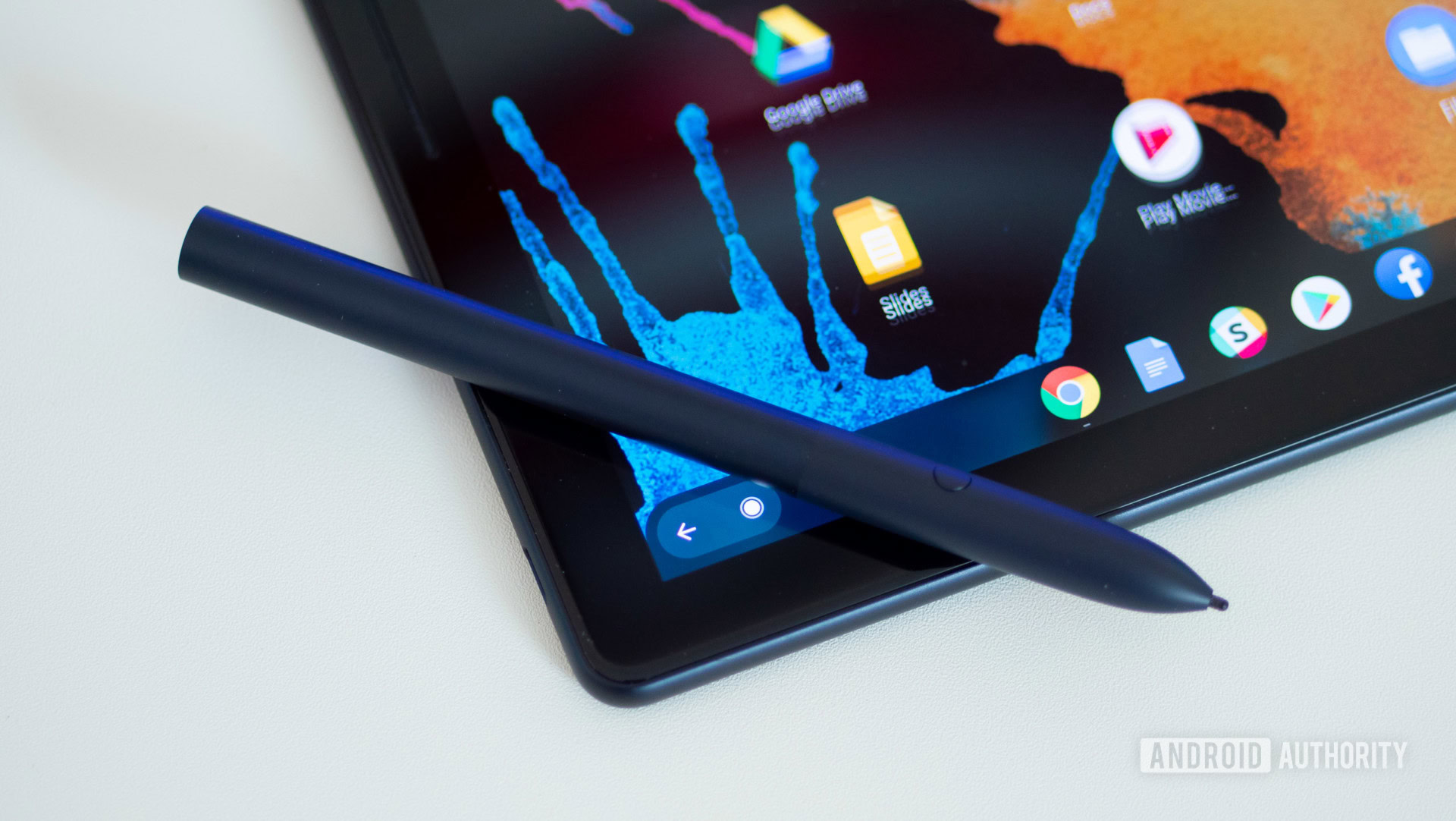
The other accessory you can pick up for the Pixel Slate is the Pixelbook Pen. It costs $99 and it’s the same one available for last year’s Pixelbook. This year it’s offered in midnight blue to match the Pixel Slate. Otherwise, it still runs on a single AAAA battery and offers the same functionality. Aside from writing and drawing the pen works as a laser point, a magnifying glass, and a screen selection tool. Pressing the button on the side of the pen will let you conduct a search with Google Assistant by circling the desired area of the screen.
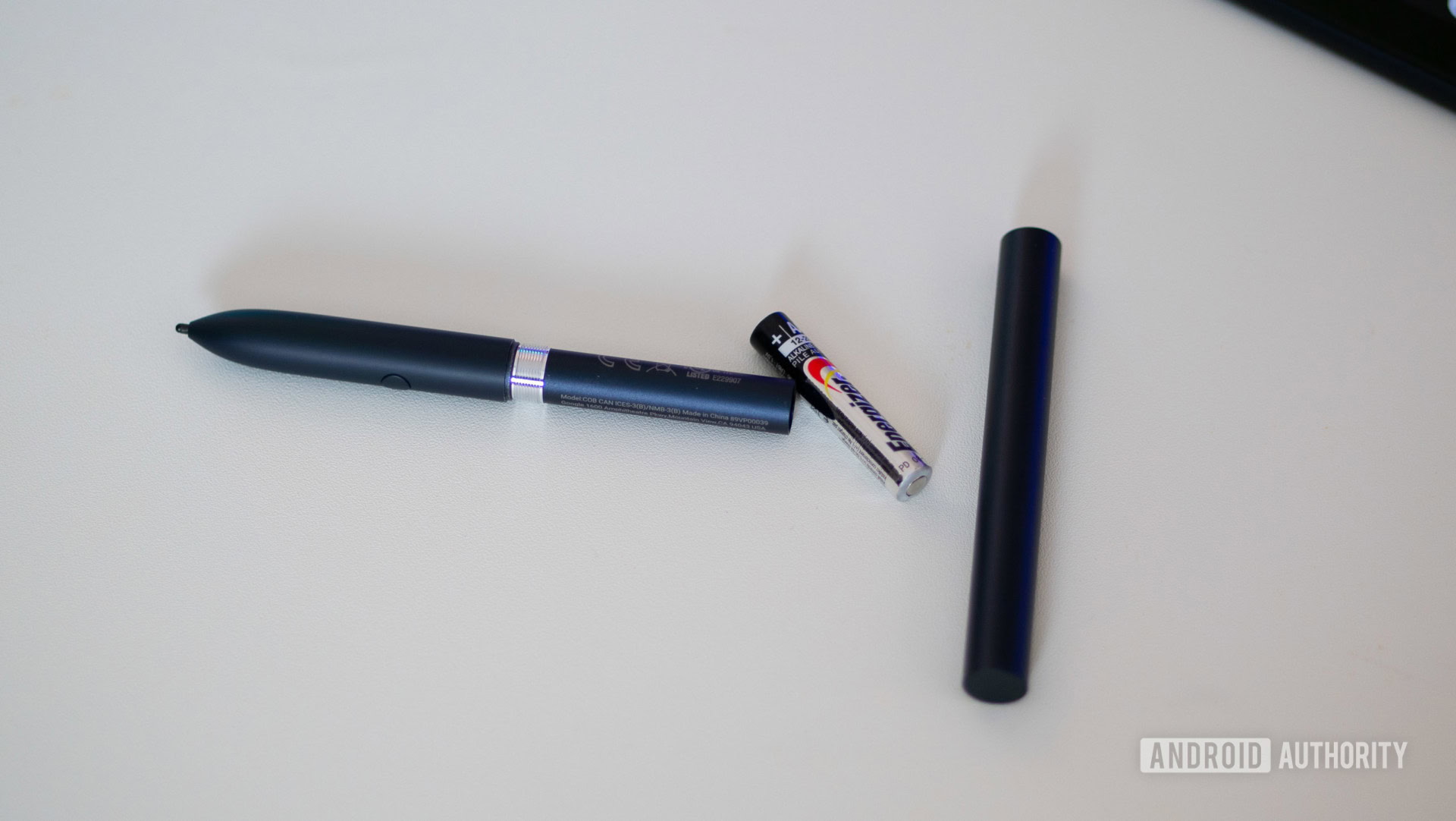
It's a great tool for handwriting notes and letting your creative side flow free but you won't be missing out on much if you choose not to buy it.
Unlike the keyboard, the pen isn’t as much of a must-have accessory to get the most out of the Pixel Slate. It’s a great tool for handwriting notes and letting your creative side flow free but you won’t be missing out on much if you choose not to buy it. The other downside to the pen is that there is nowhere to store it. It doesn’t have any magnets to attach itself to the tablet or anywhere to place it on the keyboard. You’ll have to treat it as a normal pen and be careful not to lose it.
Camera
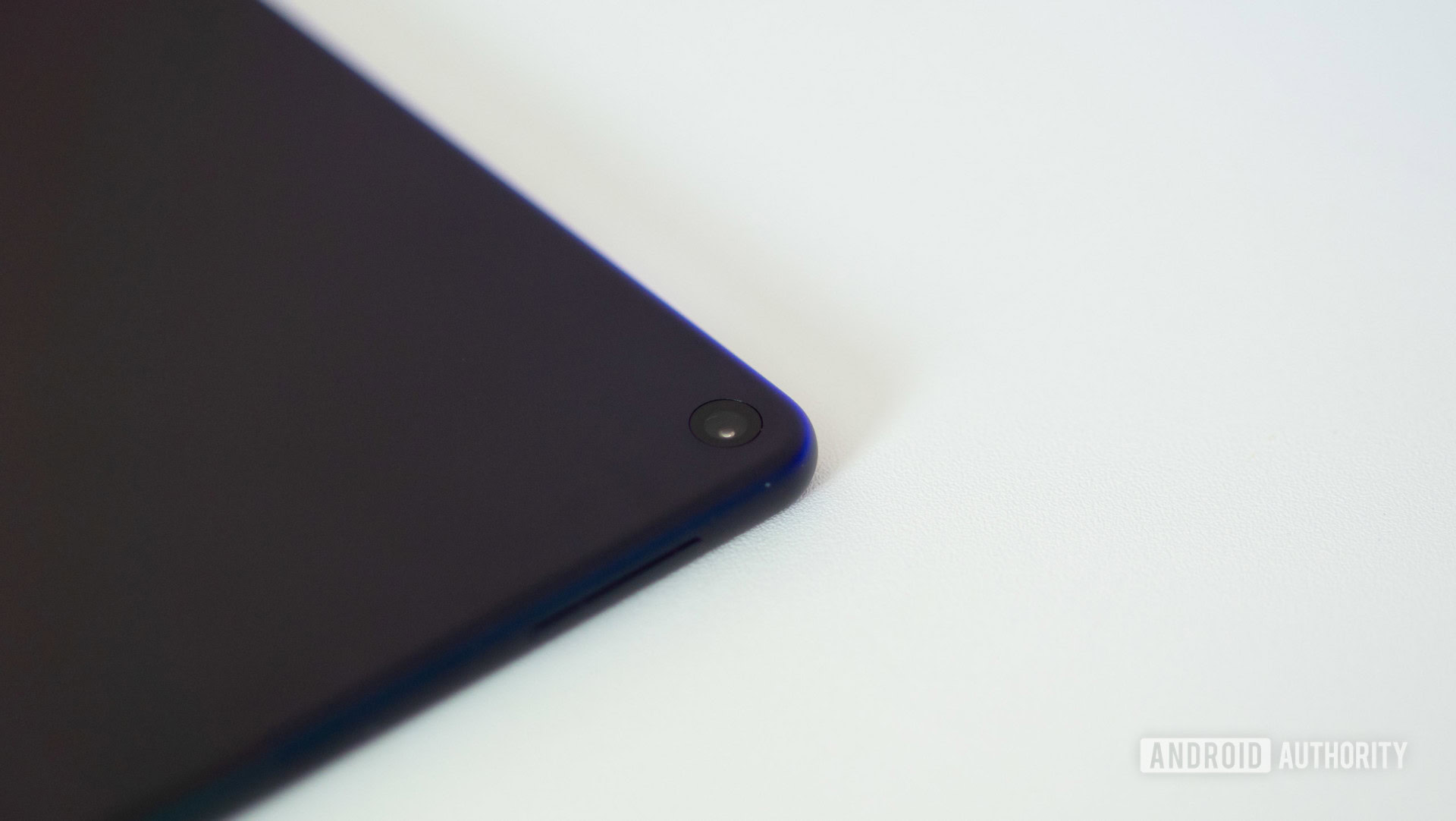
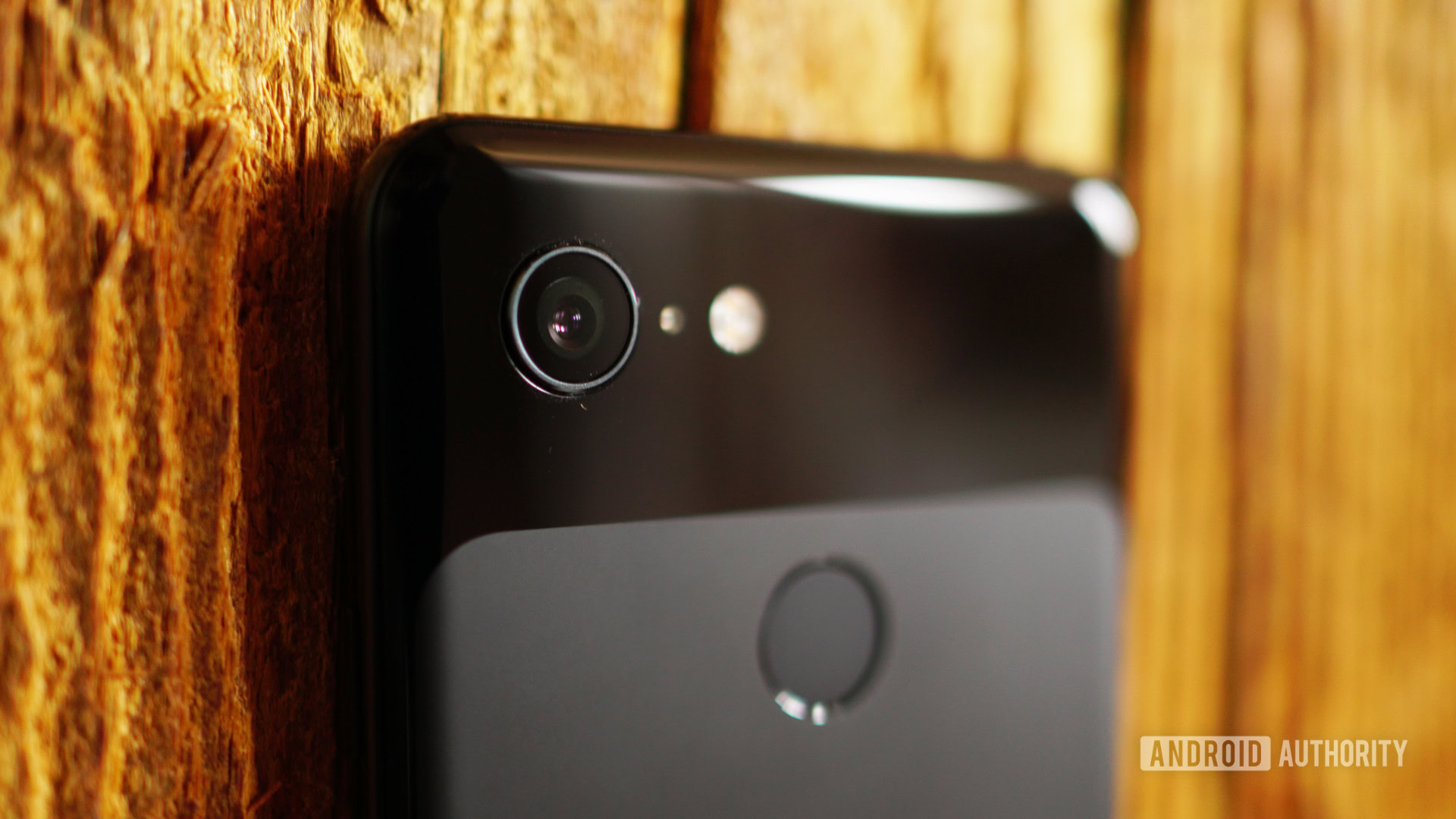
The Pixel Slate comes with 8MP cameras on both the front and rear. As with most tablet cameras, you can take pictures with it, but don’t expect it to outperform the smartphone in your pocket. You’ll also look pretty silly doing it. I’d imagine most people will use these cameras for Snapchat and video calling. You won’t find any of the Pixel 3’s camera features on the Pixel Slate, but Google uses the same machine learning algorithms as the Pixel 3 phones for portrait mode photos.
We’ve included a gallery for easy viewing but you can see the full resolution images here.
Software
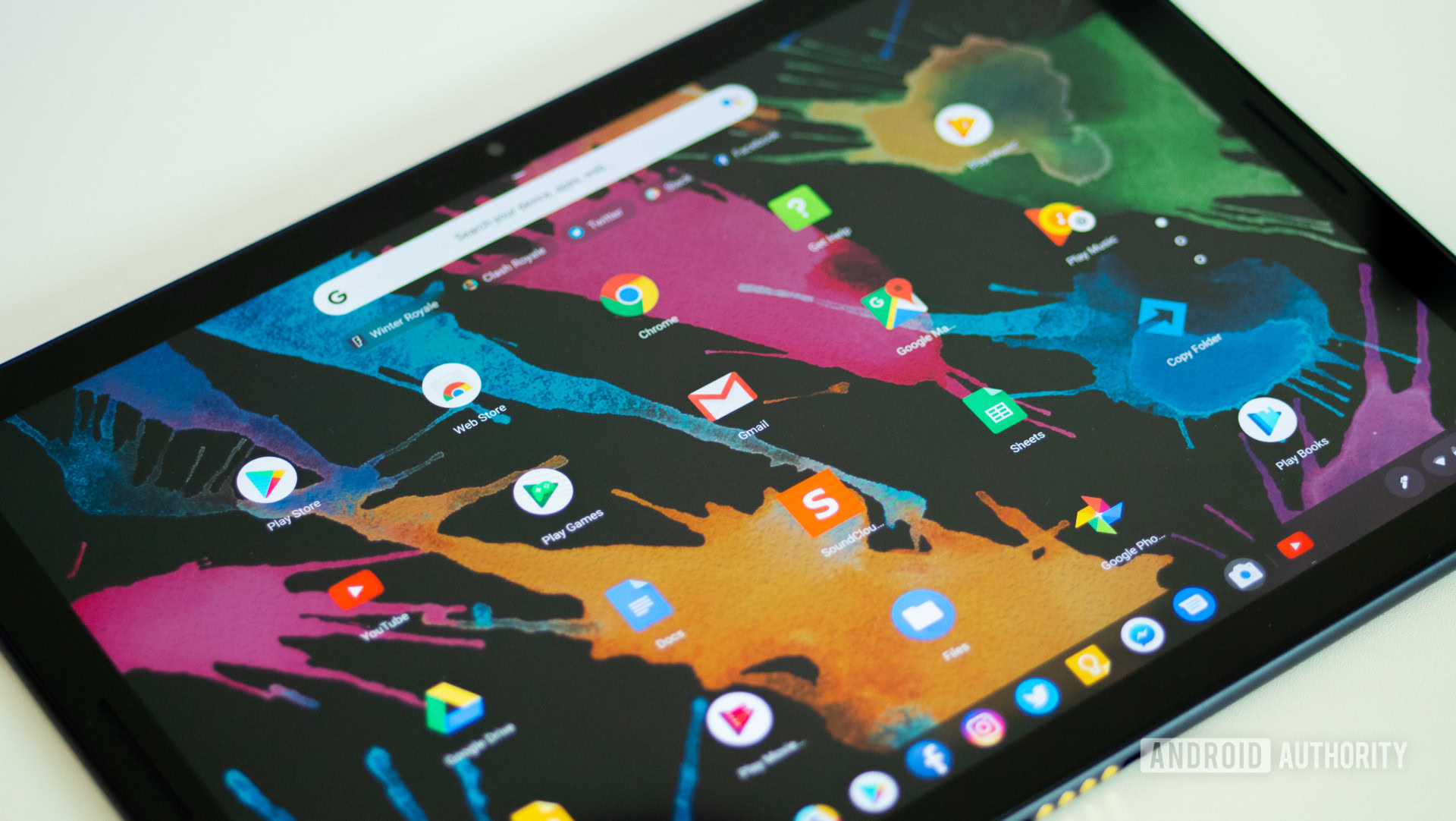
The Pixel Slate comes with some great hardware, but the software makes the experience powerful. The Pixel Slate runs Chrome OS and has access to every Android app available on Google Play. Google has optimized the software for the Pixel Slate to work better as a tablet and desktop interface.
When using the Pixel Slate by itself, Chrome OS goes into a tablet UI. This places all of your apps onto the desktop and a multitasking button will appear on the bottom right corner. Docking the Pixel Slate into the keyboard will switch it to the desktop UI. The desktop UI is the same as any other Chromebook. All of your applications go inside of an app launcher (or Shelf) and the on-screen multitasking button disappears in favor of the physical one on the keyboard. Split-screen multitasking is supported in both UI modes to help you get the most out of your workflow.
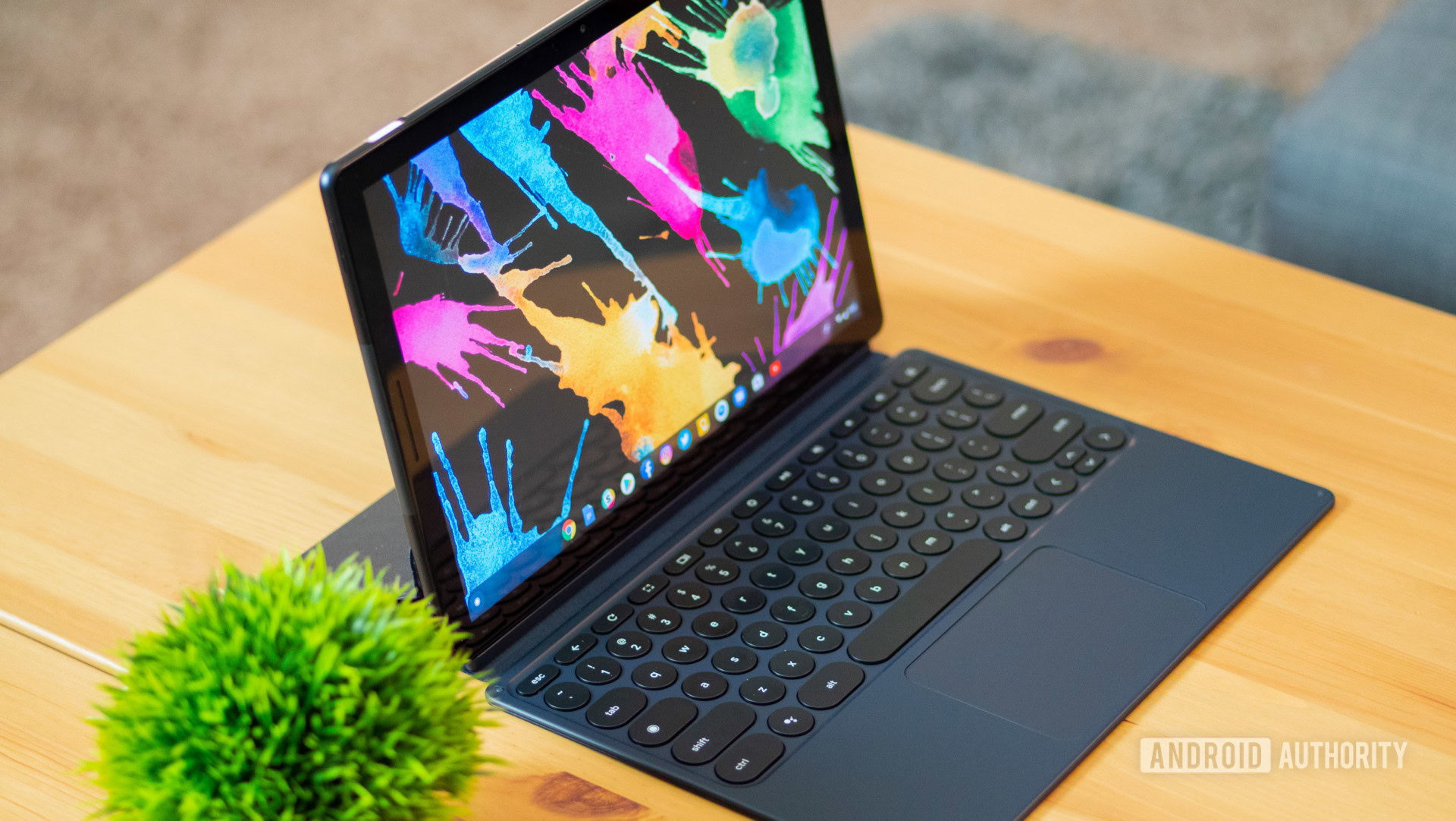
If you own a Pixel phone you can connect it to the Pixel Slate to send and receive text messages on either device. You can also continue browsing web pages open on your Pixel phone on your Pixel Slate. Both of these will appear underneath the Google search bar as a recommended shortcut.
Chrome OS and Android apps work great together but it isn't a perfect marriage.
Chrome OS and Android apps work great together, but it isn’t a perfect marriage. Android apps still suffer from the same issues they did a year ago. Not every Android app is resizable on Chrome OS. Facebook Messenger stretches out to fill your entire screen and Instagram is pillar boxed because it doesn’t support landscape mode. Chrome OS has its own set of problems. You still can’t organize apps alphabetically and having to scroll through your notifications to find a “clear all” button is unintuitive.
Quirks aside, the software is great for productivity and play. I can conduct most of my daily tasks on this machine, including editing photos. If I could edit video on the Pixel Slate I’m sure I could use this as my main computer. For the average user, it’s more than capable of being the only computer you use.
Specifications
| Google Pixel Slate | |
|---|---|
Display | 12.3-inch LTPS LCD 3,000 x 2,000 resolution |
Processor | 8th Gen Intel Core m3, i5, i7 or Celeron |
RAM | 4GB, 8GB, or 16GB |
Storage | 32GB, 64GB, 128GB, or 256GB |
Rear camera | 8MP sensor with ƒ/1.8 aperture, 1.12um pixel size, Auto Focus, 1080p video at 30fps |
Front camera | 8MP sensor with ƒ/1.9 aperture, 1.4um pixel size, 1080p video at 30fps |
Audio | Dual front speakers, two mics No headphone jack |
Connectivity/Extras | Two USB Type-C ports, keyboard connector, WiFi 802.11 a/b/g/n/ac, Bluetooth 4.2, fingerprint scanner |
Battery | 48WHr, 10 hours battery life |
Dimensions and weight | 7.0 x 290.85 x 202.04mm 1.6 lbs |
Podcast review
Pricing & final thoughts
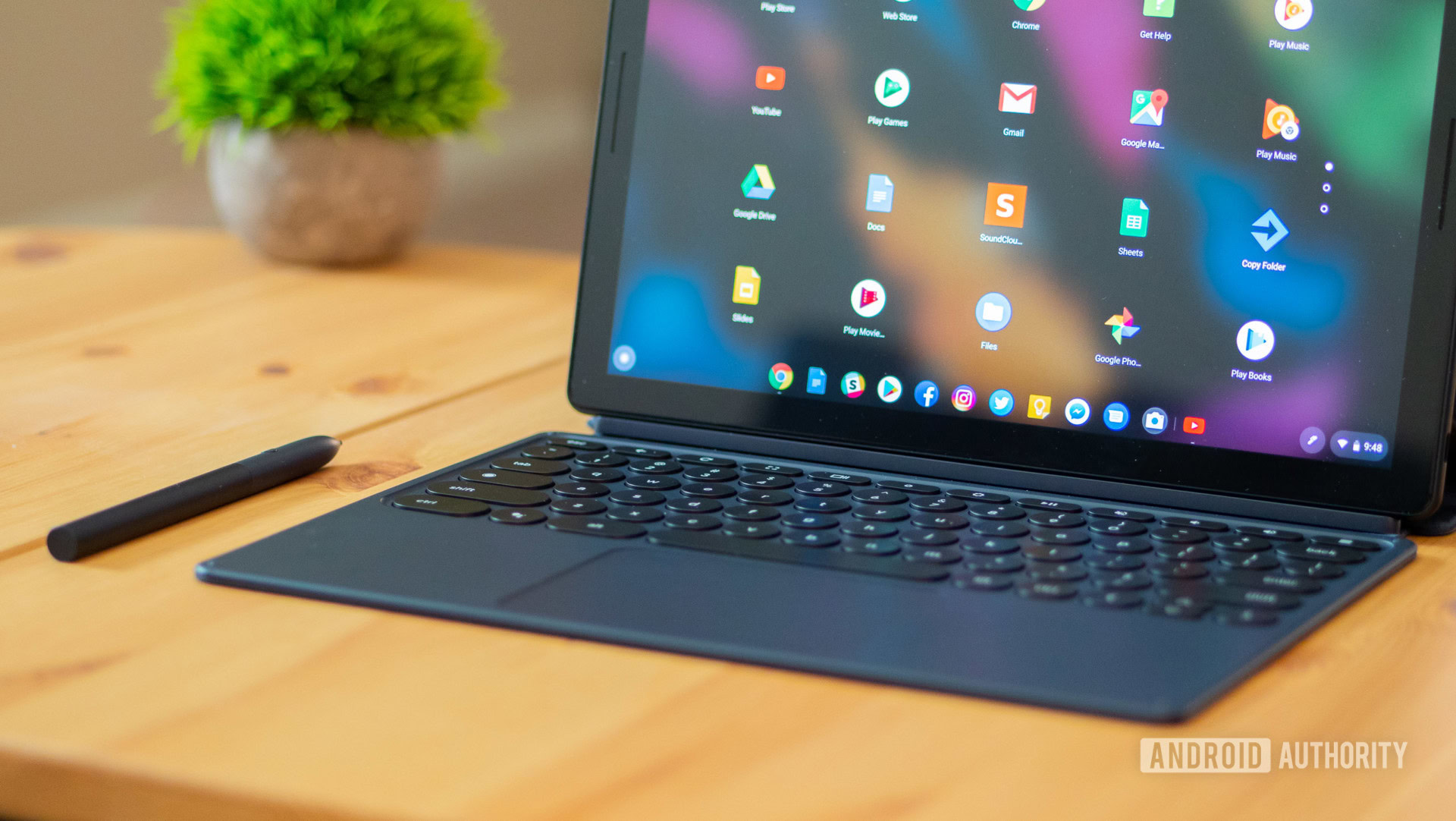
It’s no surprise the Pixel Slate is another great product from Google. It has excellent hardware and Chrome OS is extremely versatile. I’ve thoroughly enjoyed using it as my daily computer, but it’s a hard product to recommend. The Pixel Slate is expensive and the pricing is almost confusing.
The base model starts at $599, with an Intel Celeron processor, 4GB of RAM, and 32GB of storage. The next tier up retains the same processor but doubles the storage and RAM for an additional $100. The mid-tier model upgrades the processor to a Core m3 and costs $799 (Update: As of January 2020, you can get the Core m3 model with 8GB of RAM for $445). Pricing begins to skyrocket on the high-end models, with the Core i5 and i7 costing $999 and $1599 respectively. These prices also don’t include the Pixel Slate Keyboard or Pixelbook Pen which is an additional $300 if you decide to buy them both.
Buy Google Pixel Slate from: Amazon
Regardless of model, the Pixel Slate feels overpriced. To put things into perspective, the base model of the Pixel Slate costs the same as Samsung’s Chromebook Plus LTE. The Chromebook Plus LTE has identical specifications, but you get much more value for your money. It comes with a built-in keyboard, expandable storage, a 360-degree rotating display, and an included stylus.
Regardless of model, the Pixel Slate feels overpriced.
At the highest end, you could potentially spend close to two thousand dollars for the Pixel Slate and all of its accessories. For that kind of money, buying a proper Windows laptop or MacBook makes much more sense. Unless you highly value the convenience of having a detachable keyboard, ultra portability, and a true tablet experience when you want it, the Pixel Slate isn’t worth the premium.
Next: Acer Chromebook Spin 13 review: The best Chromebook, but at what cost?